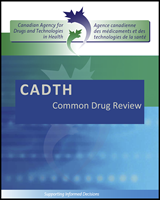Except where otherwise noted, this work is distributed under the terms of a Creative Commons Attribution-NonCommercial-NoDerivatives 4.0 International licence (CC BY-NC-ND), a copy of which is available at http://creativecommons.org/licenses/by-nc-nd/4.0/
NCBI Bookshelf. A service of the National Library of Medicine, National Institutes of Health.
Omalizumab (Xolair): Treatment of Adults and Adolescents (12 Years of Age and above) with Chronic Idiopathic Urticaria [Internet]. Ottawa (ON): Canadian Agency for Drugs and Technologies in Health; 2015 Aug.

Omalizumab (Xolair): Treatment of Adults and Adolescents (12 Years of Age and above) with Chronic Idiopathic Urticaria [Internet].
Show details- DETAILED OUTCOME DATA - Omalizumab (Xolair)DETAILED OUTCOME DATA - Omalizumab (Xolair)
- SUMMARY OF THE MANUFACTURER’S PHARMACOECONOMIC SUBMISSION - Edoxaban (Lixiana)SUMMARY OF THE MANUFACTURER’S PHARMACOECONOMIC SUBMISSION - Edoxaban (Lixiana)
- REFERENCES - Ingenol Mebutate (Picato)REFERENCES - Ingenol Mebutate (Picato)
Your browsing activity is empty.
Activity recording is turned off.
See more...